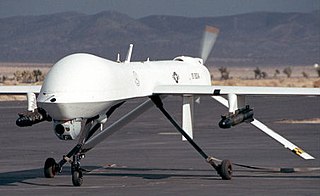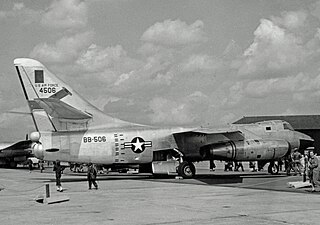
The 10th Air Base Wing is a non-flying United States Air Force unit that is the host wing for the United States Air Force Academy (USAFA) in Colorado Springs, Colorado.

The 363rd Intelligence, Surveillance, and Reconnaissance Group is a United States Air Force unit stationed at Joint Base Langley-Eustis. It is assigned to the 363rd Intelligence, Surveillance and Reconnaissance Wing. It was activated in February 2015, after having been returned to regular service after operating as a provisional unit. The group has its origins in the 363rd Fighter Group, activated on 1 August 1943 at Hamilton Field, California. The unit was credited with 41 victories but lost 43 of its own aircraft during World War II.

The 67th Cyberspace Operations Group is a unit of the 67th Cyberspace Wing. Headquartered on Kelly Field Annex's Security Hill, the group is an Air Force information operations unit.

Fürstenfeldbruck Air Base is a former German Air Force airfield near the town of Fürstenfeldbruck in Bavaria, near Munich, Germany.

15th Attack Squadron is a United States Air Force unit assigned to the 432d Wing, 732nd Operations Group at Creech Air Force Base near Indian Springs, Nevada. It flies the General Atomics MQ-9 Reaper remotely piloted aircraft.

The 17th Attack Squadron is a squadron of the United States Air Force. It is assigned to the 432d Wing, and stationed at Creech Air Force Base in Indian Springs, Nevada. The 17th is equipped with the MQ-9 Reaper.

The 30th Reconnaissance Squadron is a reconnaissance test squadron assigned to the 432nd Operations Group, 432nd Wing at Creech Air Force Base, Nevada. The 30 RS flies the RQ-170 Sentinel UAV out of the Tonopah Test Range Airport in Tonopah.

The 26th Information Operations Wing is an inactive United States Air Force unit. Its last assignment was with United States Air Forces in Europe at Ramstein Air Base, Germany, where it was inactivated on 5 July 2006.

The 460th Wing is an inactive wing of the United States Air Force. The 460th Space Wing was activated on 1 October 2001, replacing the 821st Space Group. It was inactivated on 24 July 2020 and replaced by the Buckley Garrison.

The 157th Fighter Squadron is a unit of the South Carolina Air National Guard 169th Fighter Wing located at McEntire Joint National Guard Base, Columbia, South Carolina. The 157th FS is one of the few Air National Guard squadrons to operate the HARM Targeting System (HTS)-equipped F-16C Block 52 Fighting Falcon, also known as the F-16CJ.

The 112th Fighter Squadron is a unit of the Ohio Air National Guard 180th Fighter Wing located at Toledo Air National Guard Base, Ohio. The 112th is equipped with the F-16C/D Fighting Falcon.

The 160th Fighter Squadron is an inactive unit of the Alabama Air National Guard. It was last assigned to the 187th Fighter Wing, stationed at Montgomery Air National Guard Base, Alabama. It was inactivated on 13 September 2007, with personnel and equipment being transferred to the 100th Fighter Squadron. The unit was reactivated as 160th Attack Squadron of the 163rd Attack Wing.

The 16th Airborne Command and Control Squadron was a United States Air Force squadron assigned to Air Combat Command's 461st Air Control Wing, 461st Operations Group, stationed at Robins Air Force Base, Georgia. The squadron previously flew the Northrop Grumman E-8C JSTARS, providing airborne battle management, command and control, surveillance, and target acquisition with the last E-8C flight on September 8, 2022.

The 18th Attack Squadron is a squadron of the United States Air Force. It is assigned to the 432d Operations Group, and has been stationed at Creech Air Force Base, Nevada since 2009. The squadron conducts strike, intelligence, surveillance and reconnaissance missions, operating the General Atomics MQ-1 Predator unmanned aerial vehicle.

The 19th Electronic Warfare Squadron is an active United States Air Force unit, stationed in Bann, Germany as part of the United States Air Forces in Europe Warrior Preparation Center. It was first activated during World War II as the 19th Photographic Mapping Squadron. During the war, the squadron remained in the United States and mapped areas of North America. However, starting in 1944, the air echelon of the squadron deployed to North Africa to map that area. After V-E Day, the squadron moved to England and mapped large areas of Europe until October 1945, when it began to stand down for inactivation. It was briefly active in the reserve from 1947 to 1949 as the 19th Reconnaissance Squadron.

The 69th Reconnaissance Group is an inactive United States Air Force that was part of Air Combat Command, the group was stationed at Grand Forks Air Force Base, North Dakota where it was a tenant of the 319th Air Base Wing.

The 32d Intelligence Squadron is a unit of the United States Air Force 707th Intelligence, Surveillance and Reconnaissance Group located at Fort George G. Meade, Maryland.

The United States Air Force's 10th Intelligence Support Squadron is an intelligence unit located at Langley Air Force Base, Virginia.

The 38th Tactical Reconnaissance Squadron is an inactive unit of the United States Air Force. Its last assignment was with the 26th Tactical Reconnaissance Wing, stationed at Zweibrücken Air Base, Germany. The squadron deployed to Incirlik Air Base Turkey during Operation DESERT STORM and flew combat operations while assigned to the 7440th Combat Wing. It returned to Zweibrucken after the war and inactivated 3 weeks later.

The 21st Expeditionary Reconnaissance Squadron is a provisional United States Air Force unit, assigned to United States Air Forces Europe to activate or inactivate as needed. Its last known location was at Souda Bay, Greece.





























